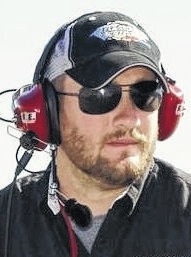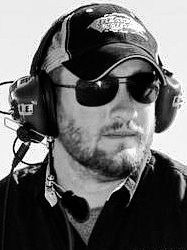I have a 2-year-old son, who any time he hears a loud noise or sees a sudden movement will turn his hands up and ask seriously, “what happened?”
Last Saturday night I felt as though I needed to wake him up during the Sprint All-Star race so that he could ask the question.
Not that I could have answered him, because I had no freaking clue. NASCAR unveiled this new format for the event after a couple of duds over the last few years. There were two 50-lap segments and then a 13-lap (random, much?) sprint to the end.
In the first segment, each driver had to make a pit stop and take at least two tires. So this is when the stuff starts getting weird. Matt Kenseth did not get his green-flag pit stop in because a caution came out when Jamie McMurray spun near the end of the segment. It meant that Kenseth was to be held for a lap. Except somehow he ended up back on the lead lap.
Confused? Yeah, me too. To compound all this, somehow nine drivers got trapped a lap down in the pit/caution/end of segment exchange. Someone from the Fox broadcast tried to explain it to me, but I didn’t do too well in quantum physics and advance irrational thinking in college, so I was still lost.
Moving along.
According the rules, each driver had to make a stop for at least two tires during the break between segments one and two. Drivers started segment two in the position they came out of the pits during that mandatory stop.
During segment two, there is a mandatory green-flag pit stop for at least two tires during this set of 50 laps. The pit stop must occur before lap 85 (or lap 35 of the second segment for the math-challenged folks in the audience, like me). I’m going to call this the Frank Stoddard/Jeff Burton rule. Back in 2002, when this thing was still called The Winston, Stoddard made a diabolically genius call to pit Burton on the last lap of the segment. The team’s stall was just before the start/finish line and all Burton had to do was jump the car across the line. He met NASCAR’s rule and got to continue on to the next segment (the 2002 edition of the race had “Survivor”-style knockouts after each segment).
So it was genius, but it may have ruined the race forever because all these funky format changes followed.
But I digress.
After segment two, there was another break and Panthers’ tight end Greg Olsen (what?) selected the number 11 (it could have been nine or 10). That meant that 11 cars had to make pit stops. Pit road is closed to everyone else.
So this is where the law of unintended consequences kicks in. There was a big wreck in segment two that took out a big part of the field. So when we got to segment three, there were only 13 cars on the lead lap. So that meant that 11 cars had fresh tires and the two guys up front were toast.
And that’s exactly what happened. Jimmie Johnson, who sandbagged the second segment due to the impending inversion of the field and the random draw to see who could pit, started in the lead. That lead lasted about 400 feet before the field railroaded him.
After a good battle with Kyle Larson, Joey Logano ended up in victory lane and $1 million dollars richer for the effort. But that is kind of an afterthought.
Tony Stewart summed it up nicely.
“I’m as baffled as everybody,” he said after he got collected in the second segment crash. “I don’t know how in the hell we were scored a lap down.
“This is the most screwed up All-Star Race I’ve ever been a part of,” he continued. “I’m mad as hell because I don’t know how they officiated this from start to finish …
“… I’m just glad this is my last one.”
For their part, NASCAR said that the whole Kenseth matter created a chain of events for which they had no plan.
NASCAR Vice President of Competition Scott Miller told media members post race regarding the way things played out post Kenseth, “it was a very unique situation and [NASCAR] did not in (its) race procedures have a mechanism to correct that.
“It hurt the whole race.”
I agree it hurt the race, but that’s because the race was too dang complicated to begin with. When they announced the format in Kansas a few weeks back and I was in the media center at the track and no one got it. We had to break out our slide rulers and take off our shoes to count to 20 to figure it all out. It looked like we needed more toes and so did NASCAR.
Here’s a novel idea: Put the cars that qualify for the race (and quit changing how that is selected) and let them run 100 laps. Don’t tell them if or when they have to pit, don’t check their lug nuts between segments (I still can’t figure out what that was about), and don’t make me or the drivers or teams have to think too much about this.
It’s a race so let them race. NASCAR, you’ve been putting races on for 70 years. It’s not that complicated. End the Inception-style mess you have going on and let’s see who can win when you put 20 of the best drivers in the world on the track and let them have at it.
I don’t want my kid to still be asking me “what happened?” 10 years from now.
Andy Cagle writes a weekly column during the NASCAR season. He can be reached by email at andycagle78@gmail.com.



